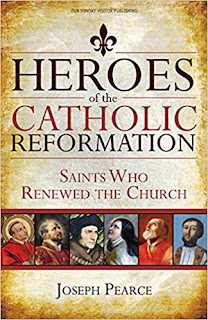Jesuit missionary priest, born at Maidstone, 1550 (?); died at Valladolid, Spain, 9 June, 1615. Educated at Oxford, 1564-1569 (?), and afterwards at Paris and Douai (1572-1575), he went thence on foot to Rome and entered the Society of Jesus, 5 November, 1575, leaving all he possessed to Douai College. His novitiate was made in Spain, and there he worked and taught until called to the English Mission, where there was not then a single Jesuit at liberty. He reached England, 20 September, 1584, and had the happiness of receiving into the Church Philip Howard (q.v.), Earl of Arundel. He has left us an autobiography full of the missionary adventures . . . [translated by Philip Caraman] One salient feature was the practice of exorcisms, at which a number of other priests assisted; and this movement made for a time a good impression. So far, however, as we can now discover, the subjects were not suffering from diabolic possession, but only from hysteria (then called "mother"). Yet there is no reason to doubt the sincerity of the exorcists, for Catholics and Protestants alike were then credulous on this subject, and the latter, so far as England and Scotland went, were very cruel. The first to object to these witchcraft proceedings were the older priests. A recrudescence of persecution put an end to the exorcisms after a year, before any serious harm had ensued; and this we should consider as a merciful disposition of Providence ("The Month", May, 1911). Many of the exorcists were martyred for their priesthood; the rest, almost to a man, were seized and imprisoned, Weston amongst the latter (August, 1586). In 1588 the Government moved Weston and a number of other priests to the old ruinous castle of Wisbech, where for four years their confinement was very strict. Butin 1592 the prisoners were, for economy's sake, allowed to live on the alms supplied by Catholics, and for this much freedom of intercourse was permitted. A great change ensued, the faithful came, quietly indeed, but in considerable numbers, to visit the confessors, who on their part arranged to live a sort of college life. This was not accomplished without much friction.
The majority with Weston (20 out of 33) desired regular routine with a recognized authority to judge delinquencies, e.g. quarrels and possible scandals. The minority dissented, and when the majority persisted, and even dined apart (February, 1595), a cry of schism was raised, and Weston was denounced as its originator, the pugnacious Christopher Bagshaw (q.v.) taking thelead against him. In May, arbitrators (Bavant and Dolman) were called in,but without result, as one espoused one side, one the other. In October two more arbitrators, John Mush (q.v.) and Dudley, were summoned, and they arranged a compromise amid general rejoicings. The whole body agreed to live together by a definite rule (November, 1595). This result seems to show that Weston and those from whom he acted as "agent were not wrong in insisting on some measure of order. On the other hand he was clearly at fault innot appreciating better the motives and feelings of the considerable minority against him; but some of them were no doubt most difficult to treat with. In the spring of 1597 the troubles of the English College, Rome, spread to England, and led to a renewal of the "Wisbech stirs", which were soon overshadowed by the "Appellant controversy". Weston took no part in this,as he was committed, early in 1599, to the Tower, where he suffered so much that he almost lost his sight. In 1603 he was sent into exile and spent the rest of his days in the English seminaries at Seville and Valladolid. He was rector of the latter college at the time of his death. His autobiography and letters show us a man learned, scholarly, and intensely spiritual, if somewhat narrow. A zealous missionary, he strongly attracted many souls, while some found him unconciliatory. Portraits of him are preserved at Rome and Valladolid.
Philip Howard's conversion--along with his wife Anne's--was very dangerous. As this site notes, Queen Elizabeth I noticed when Philip started to change:
Queen Elizabeth I became aware of the change in Philip, particularly noting his reconciliation with Anne, so when Anne was reported to her as a recusant she seized the opportunity and had her arrested. Their first child, a daughter, was born while she was in the custody of Sir Thomas Shirley at Wiston in Sussex. Philip had her baptised in the Protestant church. But nevertheless he was very near to his great decision, which eventually he came to at Arundel Castle in 1584. He was reconciled to the Church by the Jesuit Father William Weston.
This was no token conversion. It meant a complete change of life for Philip. He had a priest in his Charterhouse home in London, so that he could have daily Mass. Prayer became a regular part of his life. He continued to attend the Lords and the Court, but avoided attending Church services on various pretexts. The great question now in his mind was; how could he best serve the Catholic cause? He wrote to Cardinal Allen at Douai asking his advice. The letter was intercepted, and the Queen’s Council, using a priest in their pay, sent a bogus reply recommending him to leave England. Although Father Weston and all his friends had been against it, Philip accepted what he thought was Allen’s advice, and secretly took ship for the Continent. But of course his movements were known to the Council, and off the coast he was boarded by a warship and brought back under arrest.




















